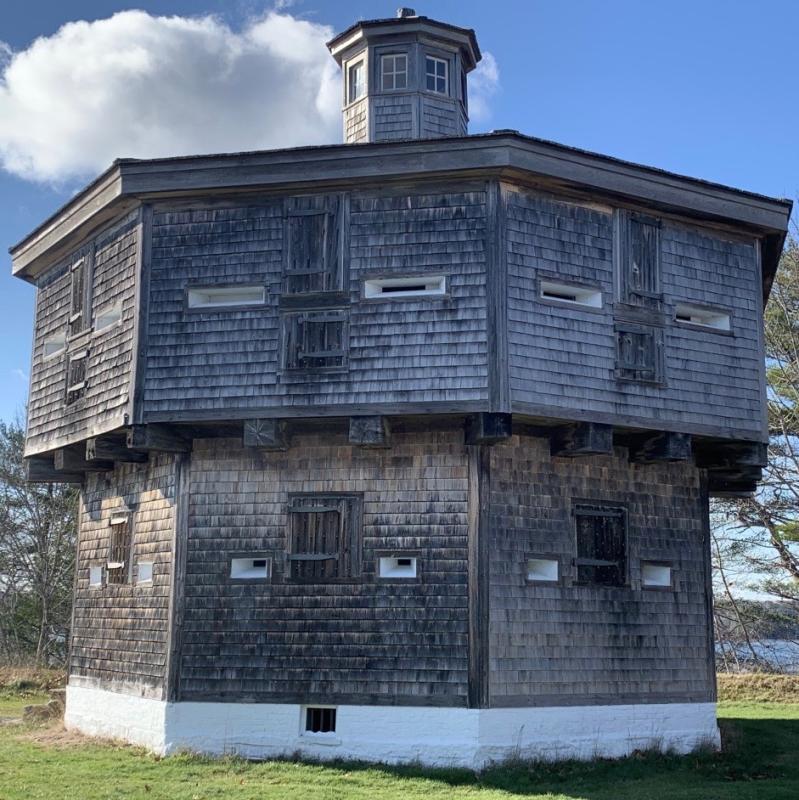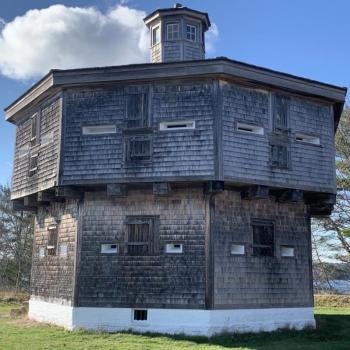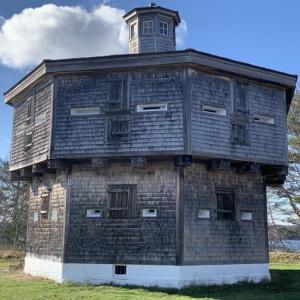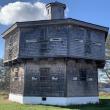Fort Edgecomb standing guard over Sheepscot since 1809
Fort Edgecomb is a state historic site, but 215 years ago it served as an important defense post. During the Thomas Jefferson administration, hostilities between the U.S. and Great Britain were growing. The Crown and the burgeoning new nation were at odds over trade and commerce, Native American policy, and Britain’s seizing of American sailors for use in its navy. The Embargo Act of 1807 also closed American ports to foreign trade during the Napoleonic War between Great Britain and France.
In 1808, construction began on Fort Edgecomb and, by 1809, it was completed. The fort’s primary purpose was defense, but its first use was enforcing the embargo. Local merchants hated the embargo because, at the turn of the 19th century, Wiscasset was one of the busiest ports in New England. The port shipped timber, logs, masts and fish. Fort records show the cannon was fired only twice: Once commemorating President James Madison’s inauguration which also coincided with lifting of the embargo; second was the signing of the peace treaty ending the War of 1812.
The fort is a blockhouse. It was built as an impediment to British ships sailing into the Sheepscot River. A block house is the rear or most inland part of the fortification. “The term essentially comes from blocking access to an important area.” said State Park Regional Manager Gary Best.
Its octagonal shape was a departure from others previously built. Older blockhouses were square. The eight-sided structures eliminated several blindspots in the fortifications. The guns were near the river. The battery had an assortment of guns including a 50-pound columbiad and four 18-pound smoothbore cannons. Each cannon had its own bastion arranged in three tiers. The blockhouse also had two carronades inside which were short cannons with a large bore.
During guided tours, visitors hear a story of how imposing the battery was. “It’s reported one time a royal vessel sailed down the Sheepscot and took a look at the fort’s strong wall of fortification and turned back,” Best said. Armed personnel guarded the fortress year-round. Personnel were given three woolen blankets to fend off Maine winters’ cold. When the fort was retired, an excavation discovered many buttons from 1814-15, according to Best.
The fort’s first floor was for storage. The second floor was an officer’s sleeping quarters. The fort was constructed from timber harvested on the property. Soldiers slept in barracks behind the fort. Best estimated 40 soldiers were the average number on duty, but occasionally the number grew to 100.
During the War of 1812, the fort held British prisoners of war. In 1814, the fort prepared for a potential British invasion of Midcoast Maine Fort Edgecomb remained active until 1818 and was reactivated during the Civil War.
Today, the park is over three acres with picnic tables. The park is located on Davis Island. “This is truly a hidden gem in midcoast Maine. The park has a beauty to it along with a nice breeze,” Best said. It’s very accessible just off Route 1. You can stop and reflect history. I invite everyone to come and visit this historic site.”

























